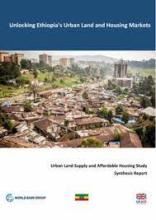Land Library Search
Through our robust search engine, you can search for any item of the over 73,000 highly curated resources in the Land Library.
If you would like to find an overview of what is possible, feel free to peruse the Search Guide.
/ library resources
Showing items 1 through 9 of 328.This study assesses the global mountain population, population change over the 1975–2015 time-range, and urbanisation for 2015.
Urban population decline has been extensively described as a triggering factor for community segregation and fragmentation, as well as for land use vacancy and house/flat vacancies, resulting in rising interest in strategies of green infrastructure expansion aimed at citizens’ wellbeing and urban
In the face of ongoing habitat loss and fragmentation, maintaining an adequate level of landscape connectivity is needed to both encourage dispersal between habitat patches and to reduce the extinction risk of fragmented wildlife populations.
The process of population concentration in cities is a worldwide phenomenon—not yet finished—which has led to a widespread rural exodus and abandonment of rural areas. In Spain it occurred very abruptly from 1960, leaving numerous population centers abandoned in the northern half of the country.
Ethiopia’s rapidly growing urban centers are facing an unprecedented level of demand for urban land
and housing. How can Ethiopia supply urban land in an efficient and equitable fashion to accommodate
The demand for energy has been growing worldwide, especially in India partly due to the rapid population growth and urbanization of the country. To meet the ever-increasing energy requirement while maintaining an ecological balance is a challenging task.
One of the major consequences of expansive urban growth is the degradation and loss of productive agricultural land and agroecosystem functions.
Urban expansion has become a widespread trend in developing countries. Road networks are an extremely important factor driving the expansion of urban land and require further study.
Earth observation data can provide valuable assessments for monitoring the spatial extent of (un)sustainable urban growth of the world’s cities to better inform planning policy in reducing associated economic, social and environmental costs.







